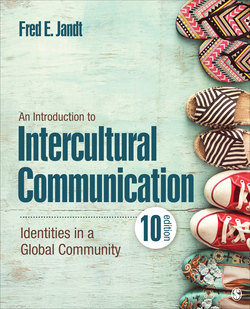Читать книгу An Introduction to Intercultural Communication - Fred E. Jandt - Страница 92
На сайте Литреса книга снята с продажи.
Case Study: Koreans in Japan
ОглавлениеThe relationship between Japan and Korea reflects deep-seated and long-standing prejudice. Historically, Korea had closer ties to China than did Japan, and both Korea and China tended to view Japan as a “troublemaking” state. This view was reinforced time and again by Japanese incursions into Korean territory and 35 years of Japan’s colonial rule. It has only been in recent years that the South Korean and Japanese governments have signed mutual friendship treaties, established normal diplomatic relations, and entered into joint economic development agreements. In an act of historic symbolism, South Korea and Japan cohosted the 2002 World Cup soccer games. Despite economic ties, there remains a sense of han, or bitter resentment, that many Koreans feel toward the Japanese.
After Japan’s annexation of Korea in 1910, thousands of Koreans migrated into Japan seeking employment. Following the great 1923 Kanto earthquake in Japan, it was rumored that Koreans were poisoning water supplies. Mob violence left some 6,000 Koreans dead. Later, between 1939 and 1945, more Koreans were forced by the Japanese government to migrate to work in mines (Weiner, 1994). During World War II, the Koreans in Japan were forced to become Japanese nationals. Japan’s surrender to the Allied Forces brought an end to the annexation of Korea, and the majority of Koreans who had been brought to Japan under forced immigration returned to Korea, but some 500,000 to 600,000 remained in Japan (Fukuoka, 1996).
When the San Francisco peace treaty came into effect in 1952, the government of Japan claimed that the Koreans then in Japan should not be granted Japanese nationality. The descendants of the Koreans who remained in Japan, who may never have been to Korea and who may not have spoken Korean, were legally foreigners.
